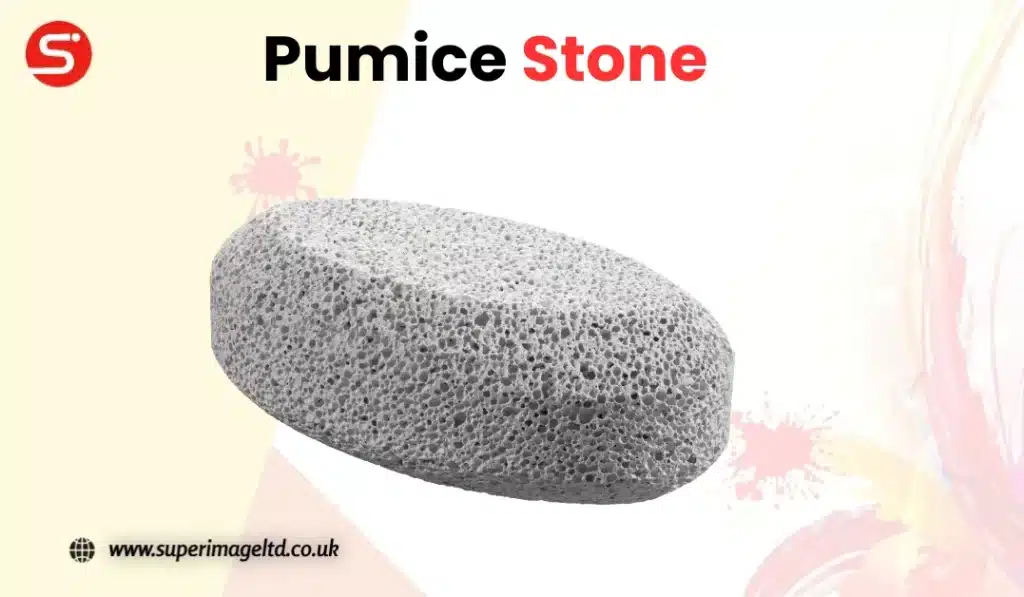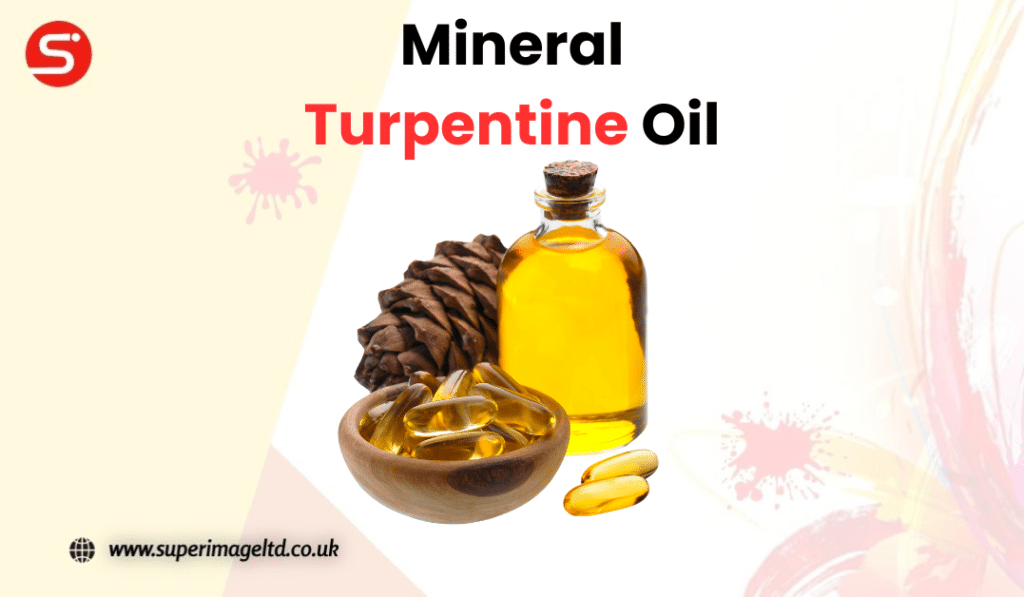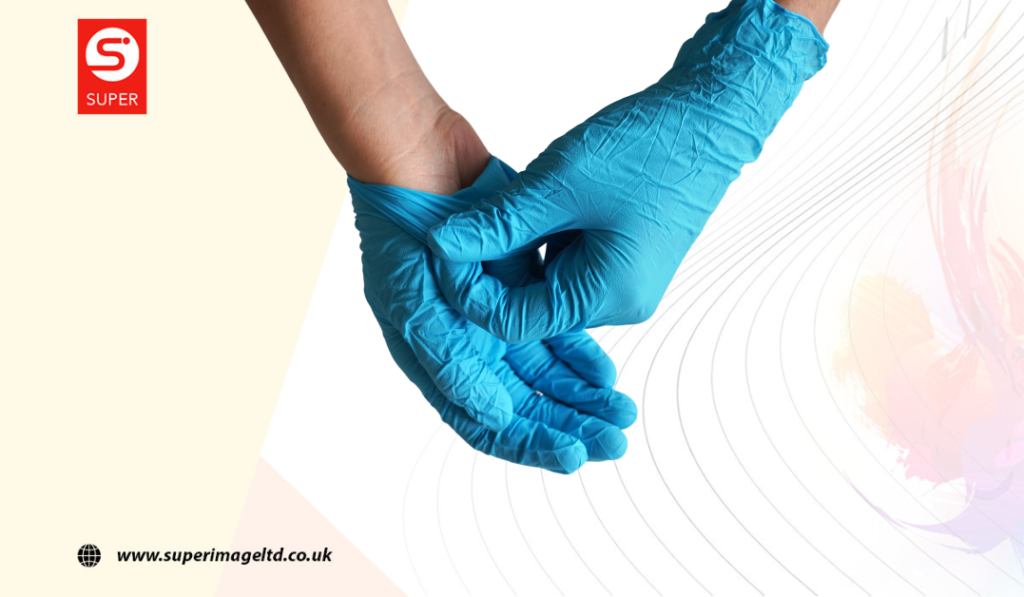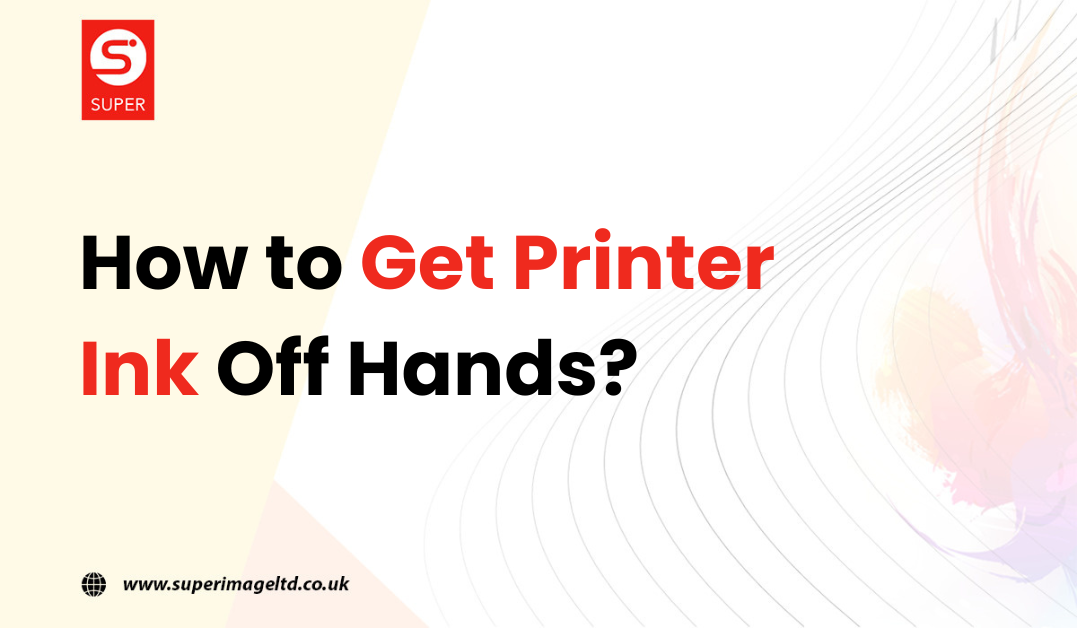Printer ink creates stubborn stains on the skin that seemingly imply permanence. However, removing printer ink from hands with the right techniques can effectively dissolve and remove ink, preventing long-term discoloration or imprints.
Having the necessary cleaning products on hand and acting promptly minimizes ink stains when accidental contacts occur through routine printer handling and maintenance.
This guide will cover how to get printer ink off hands and helpful safety tips.
5 Quick Initial Steps for Ink Removal
Removing ink from your skin can be a challenge, but with the right methods, it’s certainly achievable. Here’s a detailed yet reader-friendly guide on how to use various products for ink removal:
1. Pumice Stone

Method: Gently rub the ink-stained skin with a pumice stone. The stone’s abrasive surface helps lift the ink particles from the skin.
Precaution: Use light pressure to avoid skin damage and irritation, especially on sensitive areas.
Moisturization: After using the pumice stone, it’s essential to moisturize the area. The abrasiveness can dry out the skin, so applying a gentle, hydrating lotion or cream will help restore moisture.
2. Cosmetic Products
Makeup Remover: Effective for lighter ink stains. Makeup removers, especially those designed for waterproof products, can dissolve ink gently.
Cleansing Creams: Apply a thick layer of cleansing cream over the ink. Let it sit for a few minutes, then rub gently and rinse. These creams are formulated to remove tough substances while being gentle on the skin.
Repeated Application: If the ink doesn’t come off in the first attempt, you can safely repeat the process several times.
3. Tea Tree Oil
Natural Remedy: Tea tree oil is known for its natural solvent properties, making it a good choice for ink removal.
Direct Application: Soak a cotton ball with a few drops of tea tree oil and dab it on the stained area. The oil will help break down the ink.
Rinsing: Leave the oil on the skin for a few minutes to allow it to work, then wash it off with soap and water. It’s important to remove all traces of the oil after the process.
4. Mineral Turpentine Oil

Effective Solvent: This oil is a stronger solution for more stubborn ink stains. It’s commonly used as a paint thinner and can dissolve ink effectively.
Careful Usage: Given its potency, use it sparingly and only on the stained area. Apply with a cotton swab.
Safety Measures: Wear gloves when handling mineral turpentine oil, and use it in a well-ventilated area due to its strong fumes. Avoid contact with eyes and mouth.
5. Bleaching Liquid
High Efficacy: For extremely stubborn ink stains, diluted bleaching liquid can be used. It has strong ink-removing capabilities.
Dilution is Key: Never use undiluted bleach on your skin. Mix it with an equal amount of water to reduce its potency.
Patch Test: Before applying it to the stained area, do a patch test on a small, less visible part of your skin to check for any adverse reactions. Thorough rinse after applying the diluted bleach, wait for a minute or two, then rinse the area thoroughly with water to ensure no bleach residue remains.
5 Household Items for Ink Removal

Before specialized cleaners, try household items first for cleaning printer ink stains off hands. Target new skin stains by dissolving ink bonds immediately after contact:
- Diluted vinegar – soak paper towel applying directly for 10-30 seconds before slightly gentle skin wiping clearing visual imprints. Rinse cleaned areas under cool water to stop stinging feelings from acidity.
- Baking soda paste – sprinkle the powder onto the palm adding drops of water making a gritty paste and applying it over ink stains. Let sit a minute before rubbing circular motions lifting pigment. Rinse afterward.
- Rubbing alcohol – Soak cotton pad saturating 75%+ purity clear liquid isoforms directly contacting stained areas 30 seconds before wipe-off attempts to clear blemishes. Repeat applications are likely needed to fully clear imprints.
- Dish soap – Generously lather liquid soap contacted areas massaging bubbles penetrating layers targeting oily inks bonding. Avoid eye contact rinsing afterward.
Follow these best practices for printer ink removal from hands before using ink removal products present in the market.
Precautions When Removing Printer Ink
Exercise abundant care when applying any cleaning solvents to the skin for ink removal. Consider wearing gloves and long sleeves to protect exposed skin and clothes from drips or spills during the process.
1. Avoid Direct Eye Area Contact
Keep all products completely clear of eyes, instead dabbing around orbital areas very gently with smaller swabs if concentrating efforts reach that vicinity possibly including eyeglasses frames or contact lenses contaminated needing remedies safely without corneal abrasions.
2. Use in Well-Ventilated Locations
Operate in open outdoor settings or near operating fans circulating fumes when deploying intensive chemical solvents like alcohol or acetone nail polishes avoiding inhaling concentrated vapors directly minimizing nausea or lightheadedness.
3. Spot Test Product Sensitivity
Try minimum skin surface test patches before extensive applications ensuring no underlying irritations or reactions emerge from selected removal products prior to extensive deployments. Cease immediately if rashes, swelling or discomforts arise requesting alternatives.
4. Follow All Manufacturer Safety Guidance
Respect warning labels involving hand protections advocating durations of uses plus avoidance directives regarding wildlife or environmental contacts when disposing of residual liquids after sessions are completed. Uphold directions.
5. Rinse Fully After Applications
Regardless remedies approach used, always rinse skin thoroughly with cool-temperate tap waters lifting any lingering residual traces of cleaning biochemicals possibly aggravating dermal layers later if applications remain subtly evident despite stain disappearance after wash downs are completed.
Handling Different Printer Ink Types
Not all skins staining printer inks share similar properties. Dye-based, pigmented, eco-solvent, and UV inks vary significantly in chemical compositions requiring awareness of tailoring removal approaches accordingly for the highest efficacy of clearing blemishes without aggressions.
1. Dye-Based Ink Removal
Commonly found in consumer desktop photo printers, dye inks lift using rubbing alcohol solutions or glycerin applications gently coaxing staining separated outer skin layers. Expect the need for repetitive applications to fully clear visibility.
2. Pigmented Ink Removal
Formulated using suspended solid color particles requiring binding polymers, waterproof pigment inks resist stripping and need chemical solvent bases like concentrated citric acids or xylene oils working well slowly dissolving tenacious imprints through slower migrations not expecting immediate disappearances unlike dyes versions.
4. Eco-Solvent Ink Removal
With eco-minded lower VOC properties, specialized plant-derived eco-solvents biodegrade easily but still require secondary proprietary stripping agents found most third-party ink stain erasers well versed in handling such varieties. Avoid household cleaners lacking suitable potency.
5. UV Ink Removal
As durability and resistance increase dried exposure-cured UV inks stick aggressively. Powerful limonene orange oil solutions help here applied repeatedly over sessions not expecting quick fix removing imprints possibly needingpections managing expectations realistically.
Preventing Printer Ink Stains on Hands
While there are easy ways to get printer ink off skin, prevention best reduces future cleaning hassles and risks altogether through conscientious handling adjusting workflows upgrading long-term printer interactions.
1. Wear Protective Gloves

Simply wearing standard protective gloves and avoiding direct hand contact remains the most effective preventative step while changing cartridges or wiping clogged print heads. Dispose immediately after sessions are completed.
2. Use Ink Handling Trays
When refilling reservoirs, complete precarious steps over stainless steel handling trays capturing incidental spills easily cleaned afterwards unlike fabric surfaces permanently embedding liquids left penetrations along the threads making completions challenging avoiding secondary transfers.
3. Install Cartridges Cautiously
Sometimes erratic ink exits nozzles triggered installation steps forces inside cartridges to shift around reactive components. So turn faces imaging output plates downwards pre-insertions preventing gravitational leaks reaching hands underneath unavoidably located dangerously when accessing under-carriage slot reservoirs housing needing such directional fittings inevitabilities.
Schedule Professional Services Supporting More Protections
Handling your own printer maintenance poses risks of ink spills and equipment damage.
Even careful DIY ink refilling causes disasters occasionally from makeshift hobbyist setups. Failed attempts mean huge costs productivity, supplies, and repairs.
Comparatively, an expert professional technician is trained to safely handle finicky steps like bulk refills an inkjet model may require. They have commercial-grade tools protecting better against leaks and gear damage too.
Consider paying for pro servicing despite some fees upfront. Expert care probably offsets costs in the bigger picture.
Conclusion
When asking “How to Get Printer Ink Off Hands?” after inevitable spills, remember that timely responses remain key to minimizing permanent staining risks before deeper skin penetrations occur.
Avoid harsh initial scrubbing that could embed residues. Instead, rely on proven solvent removers like alcohol wipes or citrus cleaners formulated targeting printer ink varieties gentler initially, progressing to more invasive applications if gentler methods fail to lift visible imprints after sessions are completed.
Otherwise, thoughtfully preventing direct hand contact through wearing gloves upgrades workflow conscientiousness. With some preparatory awareness of both responding and avoiding printer ink presence, users sustain imaging productivity outputs without visible compromise or health exposures.
FAQ’s
While soap helps, a mixture of baking soda and water can enhance ink stain removal from hands.
Wear disposable gloves to shield your hands from ink, making the cleanup process much simpler.
Acetone can be harsh; opt for gentler alternatives like baby oil or vegetable oil to dissolve ink stains.
Soak your hands in warm, soapy water for a few minutes before gently scrubbing to remove dried ink.
Yes, apply hand cream, let it sit for a few minutes, then wash it off to lift ink stains from your skin.

Hello there, just became alert to your blog through Google, and found that it’s truly informative.
I am gonna watch out for brussels. I will be grateful if you continue
this in future. A lot of people will be benefited
from your writing. Cheers! Escape room
Very interesting information!Perfect just what I was looking for!!
bookmarked!!, I love your web site!
Greetings! Very useful advice in this particular article! It is the little changes that make the most significant changes. Many thanks for sharing!
Saved as a favorite, I love your blog.
You should be a part of a contest for one of the greatest blogs on the net. I most certainly will highly recommend this website!